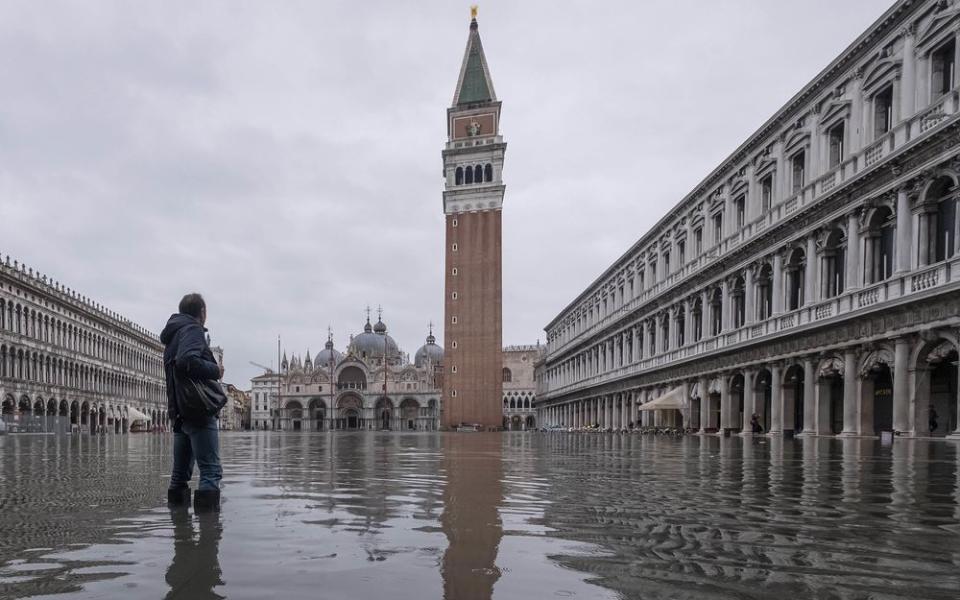Venice Flooding Caused More Than $5.5 Million in Damages to St. Mark’s Basilica
After massive flooding through Venice's beloved St. Mark’s Basilica, it is believed that the iconic site suffered at least $5.5 million in damages from flooding that overtook the Italian city last month.
Although according to The Associated Press, most of what has been damaged has been removed and accounted for so tourists who come to visit see the high water or "acqua alta" aftermath, can also see the city as usual.
The 923-year-old basilica was flooded last month when Venice saw some of its highest floods on record. Following the historic flood, the basilica was closed for about a week for washing and minor repair damage. Although visitors likely won’t notice a visible difference when they land in Venice today, the basilica’s damage is there — albeit invisible to the casual observer.
"Someone who comes to Venice to see the high water, and who goes to St. Mark’s Square the next day, sees tables in the square, says, ‘Hey, look, the orchestra is playing. Nothing is wrong here,’" the chief caretaker of the basilica, Carlo Alberto Tesserin, explained to The AP. "While, in reality, what is hidden, is everything we have verified in these days."

’The disaster is inside, where we cannot see. But we can monitor with new technology,” Giuseppe Maneschi, the vestry board technical director, told The AP.
Floodwaters damaged the basilica’s underground crypt when it went underwater for about 24 hours. The tiles of the Basilica’s dome were blown away by fierce winds. For the first time in the basilica’s history, floodwaters came rushing through its windows.
When the church was originally constructed, it was placed in a part of Venice that was considered safe from the annual flooding. But this year’s flood proves that nowhere in Venice is safe from the rising tides.
It is the salt from the lagoon waters not the water itself that is most dangerous to the basilica. As saltwater crept into the basilica, the salt seeped into the church’s marble columns. (There are more than 130 different types of marble in the landmark building, some of which no longer exist.) The salt is also eating away at mosaics and the church’s stone, brick and mortar foundations.
"Even at a height of 12 meters (nearly 40 feet), we have salt that comes out, that crystallizes,’’ Maneschi added.
Following the historic floods, thousands of Venetians gathered in the streets to protest the arrivals of mass cruise ships, which they say are worsening flooding in the city.

